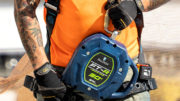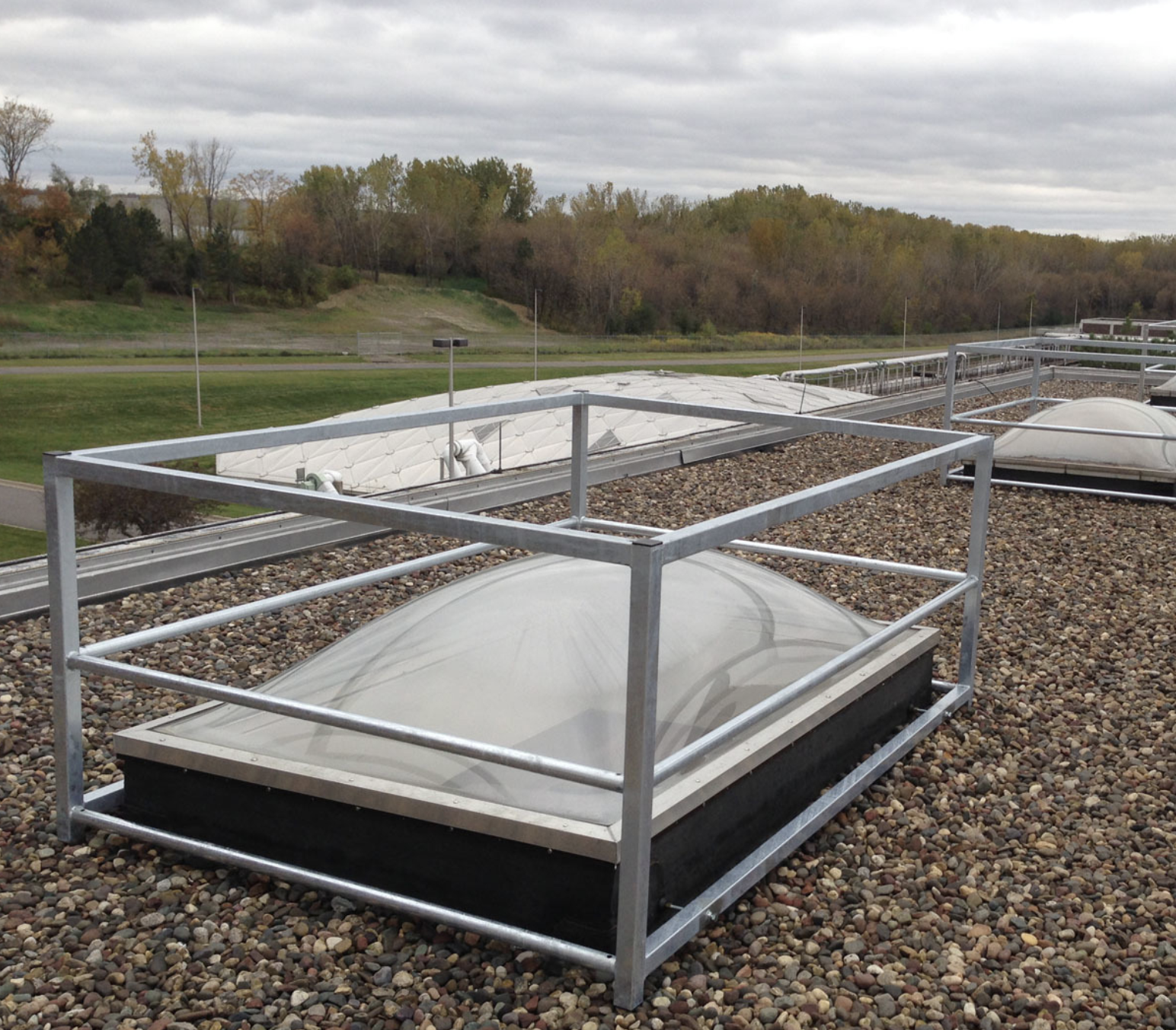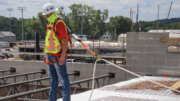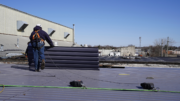OSHA’s fall-protection regulations are easy to find (see OSHA 29 CFR, Subpart M, 1926.500 – 1926.503 and four appendixes). Understanding them is a bit more difficult because they apply to a variety of occupations, including roofing.
The following clarifications are OSHA’s responses to questions regarding fall-protection requirements and work practices affect roofers:
ROOF OPENINGS
The “Holes” section of the regulation requires the use of fall protection— personal fall-arrest systems (PFAS), guardrails, safety nets, covers, etc.—when there is a hole in a work/walking surface. Because a roof is a work/walking surface, employees must be protected from falling through. OSHA concluded that immediately securing a cover over a cut hole is sufficient because the cover eliminates the fall hazard requiring fall protection. The rest of the environment may still require fall protection.
SUPPLYING MATERIAL TO THE ROOF
A supplier who delivers roofing material onto a roof must use all available fall protection, meaning a sufficient ladder or other means with a sturdy handhold. A supplier also must wear personal fall-protection equipment and connect to existing anchorage points when receiving and delivering materials on a roof.
If anchorage points do not exist for workers at the site, suppliers are not required to install anchorage points because they spend so little time at the job site. Anchorage points are the primary contractor’s responsibility, and it’s the supplier’s responsibility to use available fall protection.
CONTROLLED ACCESS ZONES
A controlled access zone (CAZ) is a designated work area marked by a warning line that only authorized employees can cross to work next to an unprotected edge. This less-safe approach is explicitly reserved for leading-edge work (the changing unprotected side of a roof or floor as it is installed) and overhand brickwork.
Except for steep roofs (slopes greater than 4-inches vertical to 12-inches horizontal) and non-residential roofing, CAZs are an option if you can prove traditional fall protection is not possible or too dangerous. Just be prepared to justify in writing why other fall protection isn’t effective; identify all authorized employees; and investigate all accidents and near accidents.
Some examples where traditional fall protection fails:
▪▪ Safe anchors cannot be provided.
▪▪ Lifelines may entangle or mire in grout.
▪▪ Fall protection prevents completion of the work.
▪▪ Work-area configuration causes ineffective fall-arrest systems.
At the very least, the CAZ must include a safety monitoring system.
USING SAFETY MONITORS ON LOW-SLOPE ROOFS
A safety monitor is a competent person responsible for recognizing and warning employees they are in danger of falling. The monitor counts as part of the fall-protection solution on low-slope roofs.
The following are fall-protection options on low-slope roofs:
-
▪▪ Guardrails
▪▪ Safety nets
▪▪ PFAS
▪▪ Warning lines and guardrails
▪▪ Warning lines and safety nets
▪▪ Warning lines and PFAS
▪▪ Warning lines and safety monitors
▪▪ Safety monitors on roofs 50-feet wide or less
The safety monitor must:
-
▪▪ Be competent to recognize fall hazards.
▪▪ Warn employees when it appears they are unaware of a fall hazard or are acting unsafely.
▪▪ Be on the same work/walking surface as monitored employees and be able to see them.
▪▪ Be close enough to talk to the employees.
▪▪ Not have any other responsibilities.
▪▪ Ensure employees follow warnings and directions.
Also, mechanical equipment can’t be in safety monitoring areas. Because these feasibility exceptions are only listed in specific categories (low-slope roof work, leading-edge work, precast concrete erection and residential construction), if a worker doesn’t fit those categories, such as HVAC installation, the worker must follow conventional fall protection. Alternative plans are generally for situations in which there isn’t a completed structure to attach anchor points; once anchor points are available, OSHA favors regular fall protection.
WARNING LINE FOR NON-ROOFERS
OSHA’s stance on fall protection is that there is no safe working distance away from an unprotected edge. But in an interpretation of workers on a low-slope roof, having just a warning line at least 15 feet from the edge of a roof for non-roofers (HVAC installers) would be considered a “de minimis” violation if non-roofers are prohibited from crossing the warning line. A de minimis violation violates regulations without making the workplace less safe and doesn’t result in a citation.
ASSEMBLING AND INSTALLING ROOFS
OSHA assumes traditional fall protection is safer than creating an alternative plan and has described some industry approaches to assembling and installing roofs without foregoing fall-protection precautions just because an anchor isn’t convenient:
-
▪▪ Assemble the roof on the ground and use a crane to place it.
▪▪ Use permanent and reusable roof anchors and reusable truss braces while working from ladders or platforms at both ends to brace the trusses without needing to be on them.
▪▪ Once trusses are braced, begin initial sheathing at the eaves with workers on platforms inside the structure, removing braces one at a time. Sheath the last course while tied off to existing wood anchors.
When OSHA regulations meet the real world, they can leave you wondering how they should be interpreted, and roofing is no exception. Hopefully this summary of how OSHA has interpreted fall protection for roofing situations clarifies some of the questions.





Can never be reminded about safety too often. I’m passing this article on to my crews and just wanted to say thanks for the reminder.
It is so important to ensure safety when roofing! It’s good to know the OSHA has put these guidelines in place. I didn’t know that the supplier delivering roof materials “must connect to existing anchorage points when receiving and delivering materials”. Temporary edge protection is also a great way to ensure the safety of all roofers on a project. Great article!